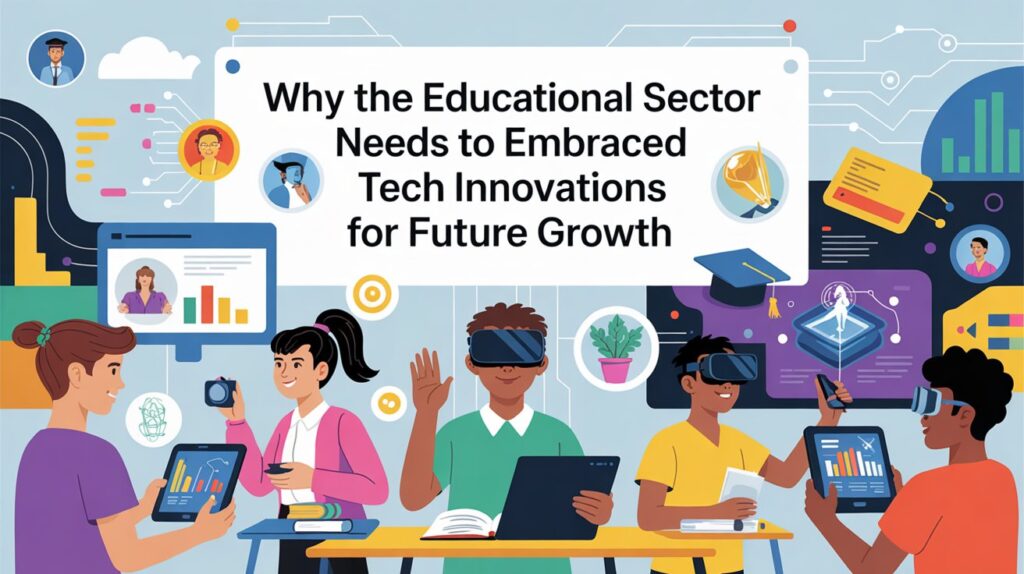Many schools and universities still rely on outdated teaching methods that fail to engage modern learners or prepare them for the digital economy. The world is changing rapidly, and traditional education models are struggling to keep up with new learning demands. Emerging technologies like artificial intelligence (AI), virtual reality (VR), and cloud-based platforms offer innovative ways to increase learning experiences. These advancements make education more interactive, accessible, and efficient while equipping students with the digital skills they need for the future. Ignoring technological innovation in education risks leaving students unprepared and institutions outdated.

Application Virtualization
Instead of installing applications directly on a device, they are packaged and executed in a virtual container, securing compatibility across different systems without modifying local settings. This approach increases security, as virtualized applications cannot interfere with system files, reducing the risk of conflicts or malware infections. Application virtualization provides a flexible way to run software without direct installation on a device, and businesses looking for VDI solutions alternatives can benefit from its ability to deliver applications seamlessly across different operating systems and hardware configurations. Businesses benefit from increased flexibility, as employees can access virtualized applications from any device, improving remote work capabilities.
Increasing Accessibility and Inclusion
Students with disabilities benefit from assistive technologies like screen readers, voice recognition software, and AI-powered tools that help them navigate coursework. Online learning platforms expand opportunities for students in remote areas, allowing them to access quality education without geographical limitations. Schools that embrace digital resources can provide learning materials in multiple formats, catering to students with different needs. Language translation tools help break down language barriers, making education more inclusive for non-native speakers. When institutions implement tech-driven accessibility solutions, they create a more equitable learning environment where all students, regardless of their circumstances, have an opportunity to succeed.
Preparing Students for the Digital Economy
Employers seek candidates who are proficient in emerging technologies, critical thinking, and problem-solving. If schools continue using outdated teaching methods, students will graduate without the skills needed to thrive in a technology-driven workforce. Coding, data analysis, and digital collaboration tools should be integrated into curricula to make sure students are job-ready. Tech-focused education not only prepares students for employment but also encourages innovation and entrepreneurship. Many successful startups emerge from students who are exposed to technology early and develop problem-solving mindsets. Institutions that fail to integrate technology risk producing graduates who are ill-equipped for the realities of the modern workplace, widening the gap between education and industry expectations. However, in order to continue teaching students more effectively, educators with teaching degrees should also work to increase their understanding of technology and artificial intelligence.
Improving Efficiency and Reducing Administrative Burden
Beyond the classroom, technology simplifies administrative processes, allowing educators to focus more on teaching and less on paperwork. Automated grading systems save teachers countless hours, while AI-powered analytics help institutions track student progress in real time. Learning management systems (LMS) streamline course delivery, communication, and resource sharing, making education more efficient. Cloud-based platforms enable collaboration among students and teachers, making sure that learning continues beyond school hours. Predictive analytics can identify struggling students early, allowing for timely intervention. Schools and universities that leverage technology for administrative tasks operate more efficiently, reducing costs and improving the overall educational experience.
Enabling Lifelong Learning and Skill Development
Technology makes lifelong learning more accessible by offering online courses, certifications, and self-paced learning modules. Professionals can upskill or reskill through platforms like Coursera, Udemy, or LinkedIn Learning, staying relevant in their careers without returning to traditional classrooms. Schools and universities should embrace this shift by incorporating micro-credentials and digital certifications into their programs. Institutions that resist these changes risk becoming obsolete as learners seek flexible alternatives to traditional education. By fostering a culture of lifelong learning, technology makes sure that education remains relevant and adaptable to the ever-changing demands of the job market.
Overcoming Resistance and Embracing Change
The risks of inaction far outweigh the challenges of implementation. Schools that ignore technological advancements will struggle to compete with forward-thinking institutions that attract students with innovative learning experiences. Governments and policymakers must prioritize funding for educational technology, while educators should receive training to integrate digital tools effectively. The shift to tech-driven education requires collaboration among stakeholders, but the long-term rewards – increased learning, increased accessibility, and better career preparedness – make it important. Institutions that embrace technology today will be the leaders of education tomorrow.

The future of education depends on its ability to evolve with technological advancements. Schools and universities that integrate technology into learning processes will create more engaging, inclusive, and effective educational environments. Interactive tools improve student engagement, digital platforms increase accessibility, and automation streamlines administrative tasks. More importantly, embracing technology makes sure that students develop the skills required in an increasingly digital world. Resistance to change is understandable, but failing to adapt will leave institutions struggling to compete. Education must move forward with technology, or it risks becoming obsolete.

